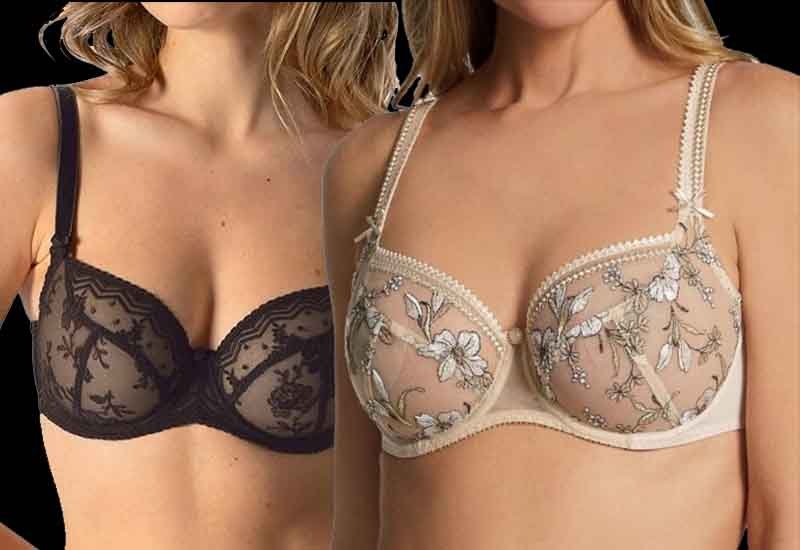- The history of the bra traces back to ancient civilizations.
- Mary Phelps Jacob patented the modern bra in 1914.
- The 1968 Miss America protest highlighted bras in feminist discourse.
- The first sports bra, the Jogbra, was introduced in 1977.
The bra’s evolution reflects societal and technological changes.
The bra, a staple in women’s wardrobes, has a rich history that mirrors societal shifts. From ancient times to modern innovations, its evolution tells a story of changing norms and technological advancements.
Though the modern bra took shape in the 20th century, its origins date back thousands of years. Historians trace its earliest form to ancient Greece. The evolution of the bra tells a deeper story of comfort and control. It also highlights cultural shifts across civilizations.
Ancient Origins of Breast Support
Women in ancient civilizations needed breast support just as they do today. In ancient Greece, women wore a strophium. It was a linen band tied around the chest. It offered modesty and support. It worked similarly to today’s sports bras.
In Rome, women used similar garments like the mamillare. These wraps were usually made from linen or soft leather. They were often worn under tunics. These early examples show the functional beginnings of the bra’s long journey.
Corsets and the Rise of Restriction
The First Modern Bra: A Turning Point
In 1914, New York socialite Mary Phelps Jacob changed fashion forever. She received a patent for the first modern bra. Her design used two silk handkerchiefs and a ribbon.
It offered a lighter and more comfortable alternative to the corset. Initially, women wore it under evening gowns. Remarkably, Jacob’s bra quickly gained popularity. It gave women freedom of movement. It also offered a more natural silhouette.
Undoubtedly, this moment marked a major transition in the history of the bra. It became a separate and functional garment. It was no longer just a corset substitute.
The Word “Bra” Finds Its Place
Before the 20th century, the bra had no consistent name. People used terms like “bust supporter” and “bust bodice.” In France, it was called “brassière.” Interestingly, this word came from a term that meant “support.”
The shortened term “bra” entered common usage around the 1920s. This shift reflected a move toward simplicity and practicality.
Gradually, language shaped public perception. As the name changed, so did understanding. The bra came to represent comfort, support, and femininity.
The Bra as a Symbol of Liberation
In the 1960s, the bra became politically charged. Feminist movements began questioning its role in reinforcing gender norms. In 1968, activists protested the Miss America pageant.
They threw bras and girdles into a “freedom trash can” outside the venue. While reports of bras being burned are exaggerated, the protest still made headlines.
Eventually, this event transformed the bra’s image. It went from a private garment to a public symbol. It stood for both femininity and oppression.
Luxury and Innovation: A Fashion Statement
By the early 2000s, the bra had evolved beyond a mere functional garment. It became a statement piece in fashion. In 2000, Victoria’s Secret unveiled the “Red Hot Fantasy Bra,” valued at $15 million. Worn by supermodel Gisele Bündchen, this luxurious creation captured global attention.
A year later, in 2001, Heidi Klum showcased the $12.5 million “Heavenly Star Bra” at the Victoria’s Secret Fashion Show. This was the first bra to make its runway debut at the iconic event.
The “Red Hot Fantasy Bra” featured 3,500 diamonds, with a stunning 90-carat centerpiece. Similarly, the “Heavenly Star Bra” was adorned with 2,900 diamonds, including a 70-carat pear-shaped diamond.
These bras not only highlighted unparalleled craftsmanship but also set new standards for design innovation. As a result, the bra transformed into a symbol of wealth, sensuality, and status, demonstrating how far fashion had come in the evolution of an essential garment.
Sports Bra Revolution: A Girdle Reinvented
The rise of women in sports led to another milestone. In 1977, Lisa Lindahl and co-inventors Polly Smith and Hinda Miller created the “Jogbra.”
They used parts of a men’s athletic supporter to design it. The original prototype was sewn from two jockstraps.
Ultimately, this innovation changed how women exercised. It offered better support. Moreover, it helped normalize female athleticism in public spaces.
The Rise of Wireless Comfort
In the 1930s, French company Le Brassière introduced the first wireless bra. It offered a relaxed fit. It did not include metal underwires.
By the 1950s and beyond, wireless bras became more common. They used new materials like Lycra and foam. These materials helped maintain shape and comfort.
Today, wireless designs continue to evolve. As a result, they align with body-positive fashion trends. Furthermore, they focus on comfort, flexibility, and inclusive sizing.
From Whalebone to Tech Fabric
Earlier bras used whalebone and steel to maintain structure. These materials offered support. Nevertheless, they caused discomfort.
Modern bras use breathable fabrics, memory foam, and 3D knitting. In addition, smart bras with biometric sensors are also being developed.
Today’s bra construction focuses on enhancing comfort and personalization. It reflects broader technological advances in wearable fashion.
The Bra as History and Future
The history of the bra spans cultures, movements, and centuries. From ancient linen bands to luxury and tech-infused designs, it continues to adapt.
Today, the bra reflects more than support. It signals freedom, identity, and innovation. As materials and social values evolve, the design of this iconic garment will continue to change.


